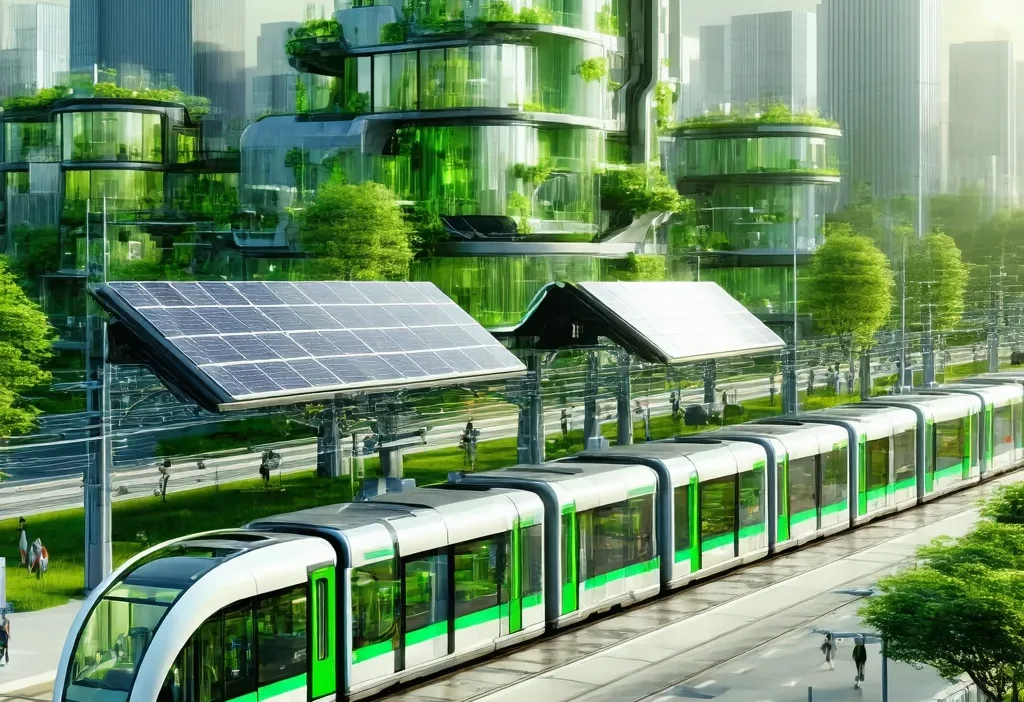The Future of Sustainable Urban Mobility: Innovations Shaping Our Cities
As we stand on the brink of a new era, sustainable urban mobility is no longer just a buzzword—it’s a necessity. Cities around the world are grappling with the challenges of pollution, traffic congestion, and the environmental impact of traditional transportation systems. The good news? Innovations in technology and urban planning are paving the way for a cleaner, more efficient future. Let’s dive into what the future holds for sustainable urban mobility.
Electric Vehicles (EVs): The New Norm
Electric vehicles are at the forefront of the sustainable mobility revolution. With advancements in battery technology and the proliferation of charging infrastructure, EVs are becoming increasingly accessible to the masses. According to a report by the International Energy Agency (IEA), global EV sales reached 6.7 million units in 2022, marking a significant leap forward in adoption.
- Battery electric vehicles (BEVs) and plug-in hybrid electric vehicles (PHEVs) are leading the charge.
- Charging networks are expanding rapidly, with companies like Tesla and ChargePoint installing thousands of superchargers worldwide.
- The shift to EVs is not just about reducing emissions—it’s also about creating a more sustainable energy ecosystem.
However, the transition isn’t without its hurdles. Issues like battery recycling and the environmental impact of mining for lithium and cobalt need to be addressed. Innovations in solid-state batteries and sustainable mining practices are key areas of focus for researchers and policymakers alike.
Bike-Sharing Systems: A Breath of Fresh Air
Bike-sharing systems have emerged as a popular solution for short-distance commuting, offering a quick, affordable, and eco-friendly alternative to cars and public transport. Cities like Copenhagen and Amsterdam have long been trailblazers in promoting cycling culture, but now, even major urban centers are embracing this trend. According to a study by the European Cyclists’ Federation (ECF), bike-sharing systems can reduce carbon emissions by up to 11% in urban areas.
The integration of technology has taken bike-sharing to new heights. Mobile apps now allow users to locate bikes, unlock them, and track their usage seamlessly. Companies like Lime and Bird have revolutionized the industry with their e-scooter services, further diversifying the options for urban commuters. However, challenges remain in terms of infrastructure—cities need dedicated bike lanes and secure parking facilities to ensure the safety and convenience of users.
Smart Traffic Management: Reducing Congestion
Smart traffic management systems are transforming how cities handle one of their most pressing issues: traffic congestion. By leveraging real-time data, artificial intelligence (AI), and the Internet of Things (IoT), these systems can optimize traffic flow, reduce travel times, and lower emissions. For instance, adaptive traffic signals adjust their timing based on current traffic conditions, ensuring smoother movement for all road users.
One notable example is Barcelona’s Smart City initiative, which uses sensors and data analytics to manage urban mobility efficiently. Similar projects are being rolled out in cities like Singapore and Shanghai, demonstrating the potential of smart technologies in creating more livable urban environments. While these systems show great promise, they require significant investment and coordination among stakeholders to be implemented effectively.
The Role of Urban Planning
At the heart of sustainable urban mobility lies the need for comprehensive urban planning. Cities must adopt a holistic approach that integrates transportation networks, land use, and environmental considerations. Mixed-use developments, where residential, commercial, and recreational spaces are in close proximity, can reduce the reliance on cars by making essential services easily accessible to residents.
Policies like congestion pricing and low-emission zones are also playing a crucial role in shaping sustainable mobility. These measures encourage people to switch to cleaner modes of transport while discouraging the use of polluting vehicles. For example, London’s Congestion Charge has been instrumental in reducing traffic volumes and improving air quality in the city center.
The Road Ahead
The future of sustainable urban mobility is bright, but it requires a collaborative effort from governments, businesses, and individuals. As technology continues to evolve, we can expect even more innovative solutions that make our cities cleaner, healthier, and more livable. The key lies in striking the right balance between tradition and innovation while ensuring equitable access for all residents.
By embracing these changes today, we can create a legacy of sustainability for future generations.





